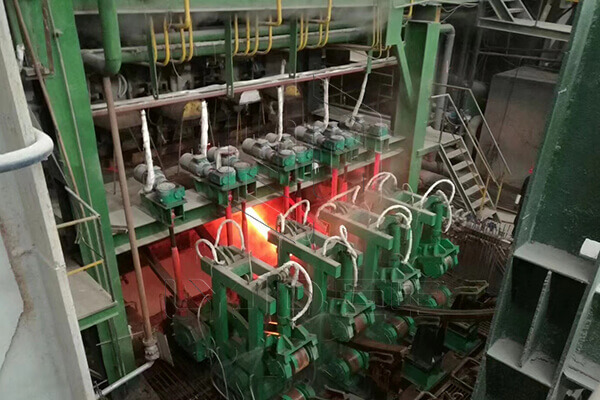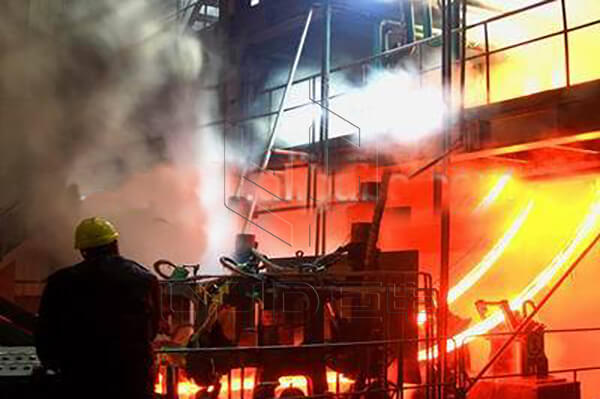As we all know, the defects of the billets are various. In the production, there are many factors affecting the billet quality, and the most important one is the secondary cooling method. Therefore, choosing a proper secondary cooling method is the prerequisite to ensure the billets quality.

In the secondary cooling zone of the continuous casting machine, if the cooling between the segments is not uniform, the surface temperature of the billet will change periodically, causing the temperature of the billet to rise, etc., which will lead to repeated phases of the steel shell. At the same time, due to the existence of strain, intermediate cracks along the columnar grain boundaries will appear between the surface and the interior of the billet, thereby forming subcutaneous cracks.
Also, due to the unsatisfactory secondary cooling, the surface temperature of the billet is just in the "brittle zone" during straightening, and under the action of the straightening force, there may be phenomena such as surface transverse cracks.
Because of the amount of secondary cooling water and other reasons, the cooling effect is not good, the surface temperature of the billet is too high, and the high temperature strength of the steel is low. Therefore, the steel shell solidified at the surface will bulge. What’s worse, if the four sides of the billet are not cooled uniformly, it will cause asymmetric shrinkage on the four sides of the billet, which will distort the billet.

Above all, the control of the second cooling will affect the effect of the second cooling, and then affect the quality of the casting billet. The ideal secondary cooling effect should make the surface temperature of the billet drop uniformly along the casting direction, and at the same time, the straightening point of the billet should avoid the brittle area of its steel grade.
In order to produce the ideal secondary cooling effect, the control of the secondary cooling water is particularly important. Commonly used control methods are, measured billet surface temperature feedback dynamic control, steel grade parameter control, and dynamic control of target surface temperature.
A thermometer is installed in each second cooling section of the billet to test the stable surface temperature of the billet, and the amount of water is controlled and adjusted according to the difference between the designed theoretical target temperature and the measured billet surface temperature. The advantage of this method is that it is simple and easy to operate, but due to the high temperature and humidity in the secondary cooling zone, the surface of the billet has oxide scale and water mist, which affects the accuracy of temperature measurement, resulting in errors in use, which is not ideal.
This control method is to formulate the target control surface temperature suitable for each steel type, find out the actual temperature of the billet surface, and formulate the corresponding relationship between the actual temperature and the target control surface temperature.
The corresponding parameters are selected according to different steel grades, and the cooling water volume is configured according to the pulling speed to control the secondary cooling effect. This method is beneficial to improve the quality of the billet, but the control method is static control, which is not conducive to the production of multiple varieties and high rhythm.
Combined with the steel grade, the casting speed and the corresponding casting state, the surface temperature of the casting billet is calculated regularly by the mathematical model, and it is dynamically compared with the preset target surface temperature considering the principle of secondary cooling water distribution. The amount of cooling water in each secondary cooling zone sector is calculated from the difference between the two, so as to ensure that the surface temperature of the billet is consistent with the target surface temperature. The basis for determining the target surface temperature is based on the optimal secondary cooling effect water distribution; the optimal secondary cooling effect water distribution refers to the optimal temperature arrangement generated by the optimal water volume configuration of each cooling fan section in the secondary cooling zone, so as to achieve the best secondary cooling effect and optimize strand quality.
Among the above three control methods, the dynamic control method of target surface temperature is the best. This method takes many factors into consideration, such as steel type, billet size, temperature at the tundish nozzle, pulling speed, etc.
So, the key factor that affects the quality of the billets casted by continuous casting machine is the secondary cooling control method.
Please send us your request and we reply to you with in 24 hours.
Submit Request